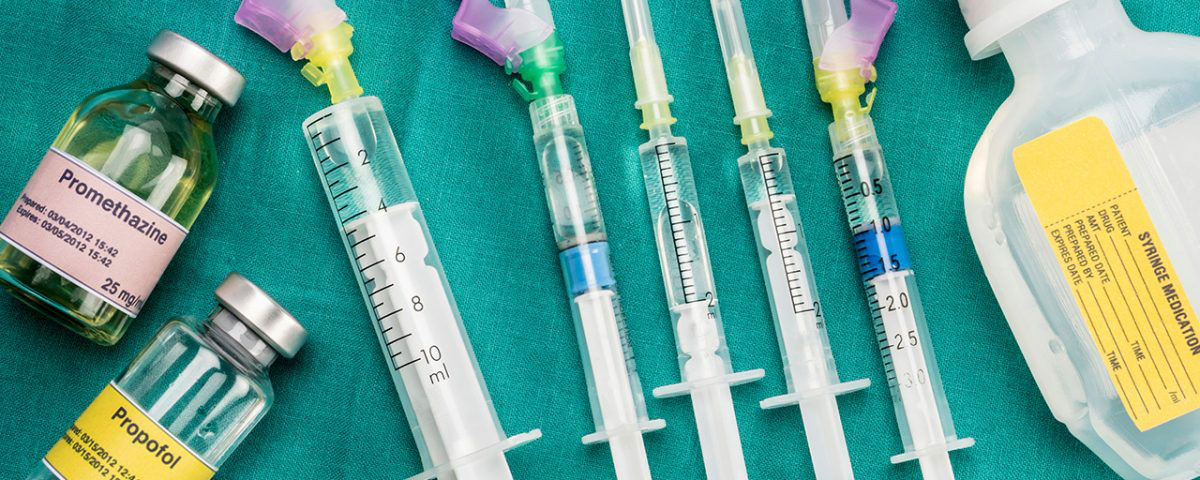Promethazine is one of the many drugs that people abuse.
Mixing this particular form of medication with other drugs like codeine has become a popular and dangerous practice. Promethazine users often wonder, at some point or another, “How long does promethazine stay in your system?” As a center that offers Florida addiction treatment, we know that more people are becoming curious about promethazine, available under brand names that include Avomine and Sominex, and other drugs that are being abused more often in combination with other substances. We have first-hand experience with the effects of substance abuse and want to share information about these dangers as often as possible.
What Is Promethazine?
Promethazine hydrochloride is a synthetic antihistamine that’s derived from phenothiazine.
Drugs with promethazine as the main ingredient can be used to treat conditions like:
- Allergies
- Motion sickness
- Nausea and vomiting
- Cold symptoms
- Nausea in reactions to blood or sickness
- Anxiety or nervousness before a procedure
- Pain following surgery or a procedure
- Sleep aid
It works by blocking a substance called histamine that’s released by the immune system when the person is exposed to something they’re allergic to. When they come in contact with an allergen, it causes an allergic reaction. While histamines are naturally released by the body in response, they can cause uncomfortable symptoms like cough, itchy and watery eyes, runny nose, and more. An antihistamine like promethazine is used to block it. This medication can also alleviate nausea and work as a relaxant by affecting the levels of substances like acetylcholine in the brain.
While promethazine can help treat certain symptoms and ailments, it’s also addictive. Many individuals nowadays, particularly young adults, are mixing promethazine with other drugs, like codeine or alcohol, to experience an intense high. Polydrug abuse (using more than one substance at the same time) is highly dangerous and can cause a variety of health problems. The effects of these combinations are often unpredictable. When it comes to promethazine, in particular, the resulting side effects can be highly uncomfortable and even life-threatening.
Common promethazine side effects include:
- Fluctuation in blood pressure
- Dizziness
- Sensitivity to the sun or heat
- Jaundice (yellowing of the skin)
- Seizures
- Abnormal heart rate
- Hallucinations
- Confusion
- Difficulties concentrating
- Vision problems
- Dry mouth
- Ringing in the ears
- Nightmares or night terrors
- Abnormal breathing
- Organ failure or disease
- Excessive bruising
- Abnormal motor movements or twitching
At Banyan Treatment Centers Stuart, we understand how dangerous promethazine can be when misused or abused. Promethazine can have various adverse short and long-term effects in an individual who uses it inappropriately. Long-term use of promethazine can cause addiction, which usually requires professional addiction treatment. At our rehab center in Stuart, we offer a medically monitored detox that serves as the first step of most patients’ recovery journeys. Our medical staff is equipped to treat withdrawal symptoms and addiction cravings that can make it difficult for patients to complete their rehab programs.
What Body System Does Promethazine Affect?
The central nervous system is the main organ affected by methazine (CNS). Promethazine is a first-generation antihistamine that has calming qualities. It works by preventing histamine from having its desired effects on the brain, which makes it useful as an antiemetic and sedative. It affects neurotransmitter function in the central nervous system, especially by blocking H1 receptors. As a result, the vestibular system is not as stimulated, which lessens the symptoms of nausea and vomiting. Promethazine also has anti-cholinergic effects, which add to its sleepy qualities. Promethazine primarily affects the central nervous system, but it's vital to understand that, like any medication, it can have unintended effects on other body systems. As such, the use of promethazine should be done cautiously and under a doctor's supervision.
How Long Does Promethazine Last in Your System?
While promethazine takes 20 minutes to work, how long does promethazine stay in your system? Promethazine can last in your system for anywhere between two and four days. Every 10 to 19 hours, the level of promethazine in the blood drops by 50 percent. It can also be detected in urine for 48 to 72 hours after the person’s last use. Of course, if a person continuously ingests this medication, then it will remain in their system for a longer period. The dose the individual took can also affect how long promethazine can be detected in their system. Additionally, promethazine can show up on a drug test and cause a false positive if the person is testing for something else.
The Dangers of Purple Drank
When a person combines promethazine with codeine syrup, they are left with something called Purple Drank. Often referred to as lean, sizzurp, or syrup, it is a recreational drug mixture that became well-liked in some neighborhoods. It usually consists of codeine-laced cough medicine from a prescription, promethazine (an antihistamine), and a fizzy beverage like Sprite or Mountain Dew. The purple color of the cough syrup, when combined with the soda, gives the concoction its name.
Purple Drank was first made popular in the hip-hop scene and has been linked to various celebrities and musicians. Through media allusions and music lyrics, which frequently romanticized its use, it received greater exposure. But it's crucial to remember that Purple Drank has serious risks and hazards.
Cough syrup contains codeine, an opioid that depresses the central nervous system. When taken together, codeine and promethazine amplify one another’s effects. A euphoric and unwinding high is produced by Purple Drank, which is frequently described as a feeling of excessive sleepiness or being "leaned out." Additionally, some people may have misaligned views and poor coordination.
The composition of Purple Drank is primarily responsible for its hazard. First off, codeine is an opioid with a high potential for abuse and dependence. Long-term or heavy use can cause tolerance, which increases the danger of overdose by necessitating greater doses to get the same benefits. Furthermore, there are dangers associated with the improper use of codeine-containing cough medication. The syrup typically includes other substances like acetaminophen (Tylenol), which, in large doses, can be hazardous to the liver. When making Purple Drank, consuming huge amounts of cough syrup raises the risk of liver damage dramatically.
Moreover, drinking this concoction may affect judgment, cause memory issues, or make it difficult to concentrate. Long-term abuse of promethazine and codeine may have detrimental effects on one's mental health as well as general well-being.
How Long Does Lean Stay in Your System?
Lean syrup can linger in your system for a variety of lengths of time based on several variables. Promethazine and codeine are usually the main active components in lean, and they both have different half-lives for elimination. As an opioid, codeine has a short half-life of around three hours, which means that half of the drug takes that long to exit your system. The antihistamine promethazine has a longer half-life, lasting roughly 10 to 15 hours. Therefore, the length of time that lean remains detectable in the body can be determined by a combination of these factors.
Furthermore, a person's metabolism, liver function, and degree of hydration can all affect how quickly lean is eliminated from the body. Codeine or its metabolites can be found in urine for up to many days following intake, according to drug testing. It's important to remember, too, that lean's effects on the central nervous system—such as drowsiness and impairment—may wear off sooner than the medication's actual duration in the body. It is crucial to understand the possible effects, hazards, and legal ramifications of using any chemical, just like with any other.
Is It Illegal to Use Lean?
Drinking lean varies in legality according to the jurisdiction and the particular items used in the recipe. Promethazine, an antihistamine of prescription potency, and codeine, a restricted narcotic, are commonly found in Lean. Since codeine is categorized as an opioid and is governed by laws about prohibited substances, it is unlawful to take it recreationally in many places without a valid prescription. Furthermore, there may be more room for abuse and negative effects when codeine and promethazine are combined, which raises legal and public health concerns. Illegal use of lean can lead to fines and jail time, among other legal repercussions. People must prioritize their health and stay informed about local rules and regulations concerning the use of these substances to avoid legal ramifications.
Heal With the Banyan Stuart Rehab Center
Promethazine is one of the many substances people have experimented with. Unfortunately, like many other drugs, promethazine can be dangerous and stay in your system for several days. It’s also an addictive substance that can be difficult to quit without help. This is why the Stuart, Florida, Banyan treatment center dedicates its resources to aiding those in need to overcome their substance use disorders. While it may be an isolating experience, we are here to provide both a community and a sense of support to those struggling.









